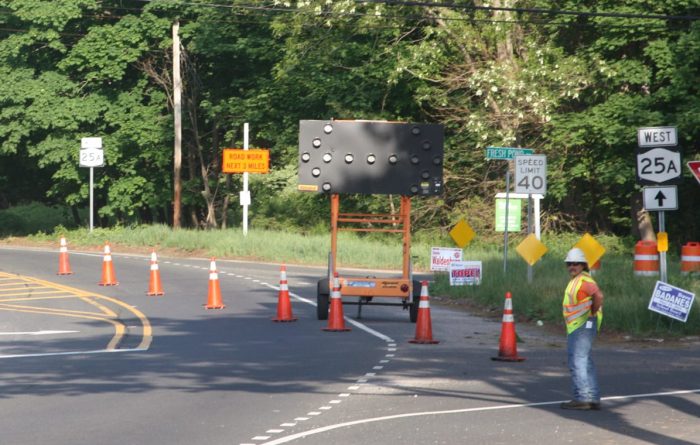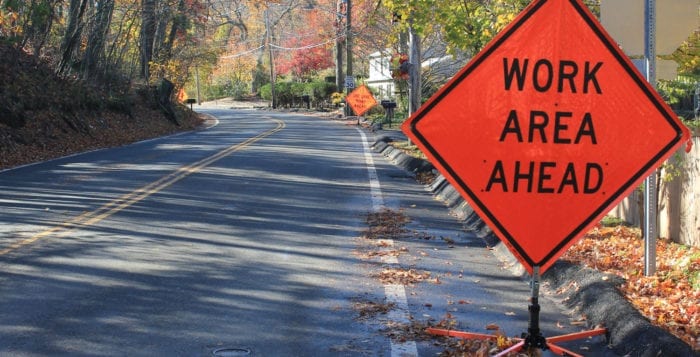By Kevin Redding
Last month, contractors from PSEG Long Island started work on what’s planned to be an eight-month-long project in Rocky Point that will strengthen the electrical grid and harden the system to better combat extreme weather on Long Island.
The project route covers three miles along an electric main line circuit, with crews working on several streets including Hallock Landing Road and Rocky Point Landing Road.
This project is part of an ongoing effort by the Federal Emergency Management Agency to improve electrical infrastructure to protect against future storm damage and help restore power faster. Rocky Point is among a long list of routes being worked on in the Town of Brookhaven.
The project’s $729,000,000 in funds was secured in 2014 through an agreement between Gov. Andrew Cuomo (D) and FEMA’s Hazard Mitigation Assistance Program, which helps communities implement hazard mitigation measures following a major disaster declaration.
The project will replace existing wire with more weather-resistant wire, install new and more durable poles in several locations, and install or replace switching equipment to help reduce the number of customers affected by an outage, according to the official PSEG website.
“By putting in the storm-hardened equipment, the stronger wires, and the more weather-resistant poles, it will help to reduce the number of customers affected during a storm,” said Elizabeth Flagler, PSEG Long Island’s media relations specialist. “So when we get the high winds, the equipment will hold up better.”
“By putting in the storm-hardened equipment, the stronger wires, and the more weather-resistant poles, it will help to reduce the number of customers affected during a storm.”
—Elizabeth Flagler
After Hurricane Sandy and the following winter storm in 2013, many of the areas being worked on in Rocky Point were among the longest without power on the North Shore — some homes were dark for up to 10 days. Councilwoman Jane Bonner (R-Rocky Point), who lives in Rocky Point, experienced the extensive power outages firsthand. She said that many people will benefit when the work is completed.
“In a perfect world … we won’t experience another storm like Superstorm Sandy, and we’ll never know if this was needed,” Bonner said. “But the prevailing opinion is that there were a host of reasons why so many people were without power, and PSEG is addressing these reasons. There were major health concerns for people to not have power that long … sanitary concerns; elderly and infirmed people that needed power that don’t have generators; we have concerns with long-term use of generators; so, if we can keep the power going, it’s a good thing.”
Brookhaven Town Supervisor Ed Romaine (R) took over his post a month after Hurricane Sandy hit. He said that in his first few weeks in office he was overwhelmed trying to recover from all of the damage it caused.
“All poles and wires were down, water was about knee high throughout all the streets, if not higher, and obviously, you want to be able to withstand the next storm,” he said.
He hopes that with these improvements, if and when a next storm were to hit, the damage would be minimal.
“The recovery time won’t be that long,” he said. “And the financial damage will be limited.”
Romaine did, however, suggest that PSEG bury wires to further minimize damage.
“Costs for burying wires is about the same that you would pay to recover from a series of storms in a 30-year period,” he said. “It’s more costly in the short run, but in the long run there’s no difference, and you will be much better protected by buried wires.”
Trees that grow near power lines will be trimmed when necessary, as they increase the chances of power outages and pose safety risks. The new poles will be about the same height as existing poles but will have a stronger base and be placed about 2 to 3 feet from the current pole locations.
PSEG representatives say that they anticipate minor traffic interruptions, as well as some localized, short-duration power outages related to the project. The crews will generally work Monday through Saturday, 7:30 a.m. to 5 p.m., with limited evening and Sunday work.







